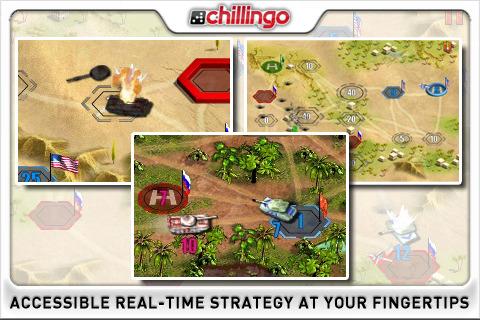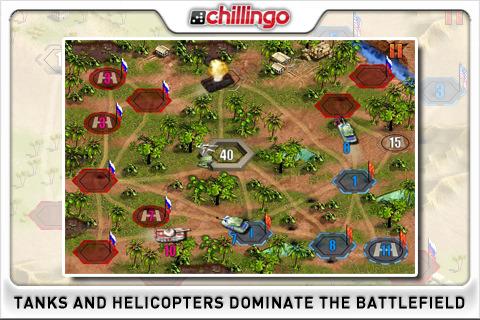- Wondering how to get Monopoly GO! free rolls? Well, you’ve come to the right place. In this guide, we provide you with a bunch of tips and tricks to get some free rolls for the hit new mobile game. We’ll …
Best Roblox Horror Games to Play Right Now – Updated Weekly
By Adele Wilson
Our Best Roblox Horror Games guide features the scariest and most creative experiences to play right now on the platform!The BEST Roblox Games of The Week – Games You Need To Play!
By Sho Roberts
Our feature shares our pick for the Best Roblox Games of the week! With our feature, we guarantee you'll find something new to play!Type Soul Clan Rarity Guide – All Legendary And Common Clans Listed!
By Nathan Ball
Wondering what your odds of rolling a particular Clan are? Wonder no more, with my handy Type Soul Clan Rarity guide.
Modern Conflict Review
“In respect of military method, we have, firstly, Measurement; secondly, Estimation of quantity; thirdly, Calculation; fourthly, Balancing of chances; fifthly, Victory.”
That’s Sun Tzu, describing an iPhone game in the 6th Century BC.

A refreshingly straightforward real-time strategy game that hits all the sweet spots for mobile fun.
“In respect of military method, we have, firstly, Measurement; secondly, Estimation of quantity; thirdly, Calculation; fourthly, Balancing of chances; fifthly, Victory.”
That’s Sun Tzu, describing an iPhone game in the 6th Century BC.
Ok, maybe he was referring to the ancient art of warfare, but Mr. Tsu could easily have been describing Modern Conflict, a new real-time strategy game from Gaijin Entertainment. This title follows a tried-and-true numbers template that will be familiar to those who played games like Galcon, but with a Risk-like 20th-century war theme.
Tasked with commanding your tanks and helicopters on the battlefield, Modern Conflict presents a seemingly simple, yet fantastically diverse set of strategy tools. The entire map is laid before you on one screen in landscape mode, displaying a series of bases with paths connecting them. Your armored units are represented while in-base as a number overlay signifying their strength. Tapping once on an occupied base will select half of however many units are available, and a double-tap selects all. The player then selects an adjacent base to attack when using tanks, or any base on the map to attack with helicopters.

Neutral bases, which are usually the majority at the outset, require an equal or greater number of units than whatever number is displayed on them in order to take the base. In other words, a base with a ten on it requires eleven units to defeat. Once captured, each friendly base will constantly generate units at a rate of roughly one per second, up to pre-determined maximums depending on base size. It’s a straight numbers game: the player is constantly doing very simple addition and subtraction as they direct your troops around the map, reacting to threats from the computer player (always in red) as they wage their own offensives.
Several wrinkles have been added to this framework: fortified bases require double or even quadruple the advertised force number to overcome. Helicopters take double casualties versus ground bases, and vice versa for tanks. Several bases come equipped with anti-air guns or tank-busting fortifications that can mess with your units as they trundle on to the next fight. One particularly interesting (and unpredictable) feature is that the units can themselves engage with each other if they pass within a certain range, sometimes outright destroying one side before it even makes it to the base. It’s not just what you move, but when.
A lengthy and comprehensive tutorial helps you learn the system before you engage in the real deal (indeed, one must complete this before entering the campaign proper). Composed of five scenarios by itself, this training stage is more than enough for any player to feel pretty secure by the time they are ready to start the missions. It’s a good thing, too: right off the bat, you are thrown into very fast scenarios. A game of Modern Conflict might take two to four minutes to play, but it feels like much longer, so intense is the attention it demands.

Besides the base and unit tactics, there are also a number of Chance Card-style events that can completely throw a seemingly lost battle back into play. Since I was playing on the “rookie” mode, I suspect that there was an invisible hand on the scale, as these events tended to happen when it really looked as if all hope was lost. For instance, while down to my last remaining 5 tanks and awaiting the decisive blow to come, a miracle mortar strike from heaven all but obliterated the enemy forces, giving me time to rally and stage a frankly spectacular comeback. It was a bit deflating to see it happen not twice but three more times, each saving me from the brink of doom with some amazing happenstance. Not that I’m complaining, mind you – these were great, dramatic moments. But players who frown on this sort of backstage chicanery by the AI player might prefer a tougher difficulty level.
The campaigns themselves are a touch on the short side. Besides the American and Chinese campaigns, there’s also a Russian campaign that unlocks after finishing your first pass of eleven missions. Since the battles are so brief, this does feel a bit light, in terms of scenarios. An additional Survival mode helps extend play further, and it does; this is the sort of game that just needs further permutations of maps and starting unit placements. Modern Conflict really does feel like a turn-based game played out at hyper speed.
The sound effects and presentation are very good, if nothing fancy. Some radio chatter and explosions are particularly nice touches during the fighting. Modern Conflict also supports the Crystal online social service for trophies, leaderboard support and to issue direct challenges to friends. This aspect is extremely well-integrated into the game, and doesn’t feel tacked-on or superfluous.
Only the length of the campaign mars what is otherwise a refreshingly straightforward real-time strategy game that hits all the sweet spots for mobile fun: it’s accessible, it’s addictive and it’s quick. Modern Conflict is absolutely worth checking out.

The good

The bad
More articles...
Monopoly GO! Free Rolls – Links For Free Dice
By Glen Fox
Wondering how to get Monopoly GO! free rolls? Well, you’ve come to the right place. In this guide, we provide you with a bunch of tips and tricks to get some free rolls for the hit new mobile game. We’ll …Best Roblox Horror Games to Play Right Now – Updated Weekly
By Adele Wilson
Our Best Roblox Horror Games guide features the scariest and most creative experiences to play right now on the platform!The BEST Roblox Games of The Week – Games You Need To Play!
By Sho Roberts
Our feature shares our pick for the Best Roblox Games of the week! With our feature, we guarantee you'll find something new to play!Type Soul Clan Rarity Guide – All Legendary And Common Clans Listed!
By Nathan Ball
Wondering what your odds of rolling a particular Clan are? Wonder no more, with my handy Type Soul Clan Rarity guide.







